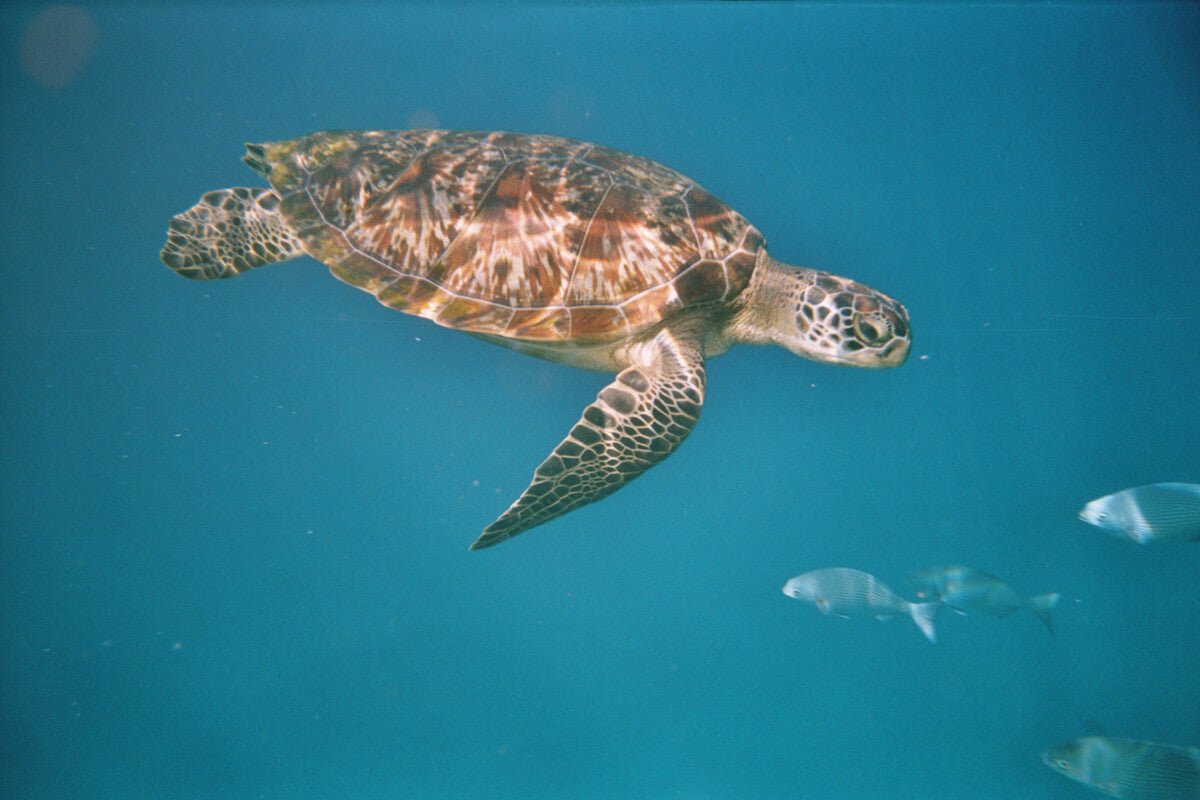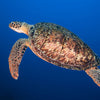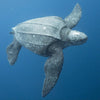Green sea turtle: facts, habitat and protection

What is the Green Sea Turtle?
The Green Sea Turtle (Chelonia mydas) is one of the most famous and popular marine animals in the world. These majestic animals are known for their striking green coloration, which comes from the algae they eat. In this article, we will explore the world of the green sea turtle, including its habitat, behavior, and conservation status.
Appearance and Anatomy
The green sea turtle is a large reptile that weighs up to 500 pounds when fully grown and is over three feet long. They have a characteristic heart-shaped carapace that can be green, brown or even black. Their legs are paddle-like, which helps them swim through the water, and they have a pointed beak that they use to grab their food.
Habitat and range
Green sea turtles are found in the warm waters of the Atlantic, Pacific and Indian Oceans. They spend most of their time in shallow coastal areas, where they feed on seagrass and algae. During the breeding season, female turtles return to the beaches where they were born to lay their eggs.
Diet and feeding habits
As mentioned earlier, green sea turtles are herbivores and feed on a variety of sea grasses and algae. They have powerful jaws that they can use to tear up tough vegetation, and they can hold their breath for up to five hours in search of food.
Life cycle and reproduction
Green sea turtles reach sexual maturity between the ages of 20 and 50, and females can lay up to 200 eggs in a single clutch. After hatching, baby turtles make their way into the water, where they face many threats, including predators and pollution. Only a small percentage of hatchlings survive to adulthood.
Threats and protection
Green sea turtles are classified as an endangered species by the International Union for Conservation of Nature (IUCN). They face numerous threats, including habitat loss, poaching, and pollution. One of the biggest threats to green sea turtles is the ingestion of plastic, which can cause blockages in their digestive system and result in a slow and painful death.
Conservation efforts
Many organizations and governments are working to protect green sea turtles and their habitats. One of the most successful conservation efforts is the creation of protected nesting beaches where female turtles can lay their eggs undisturbed. Efforts to reduce plastic pollution in the oceans are also helping to protect these magnificent animals.
Conclusion
The green sea turtle is a fascinating and important species that plays a critical role in the ocean ecosystem. Although it faces many threats, there is hope for its survival through continued conservation efforts. By working together to protect these beautiful animals, we can ensure that they continue to thrive in our oceans.






